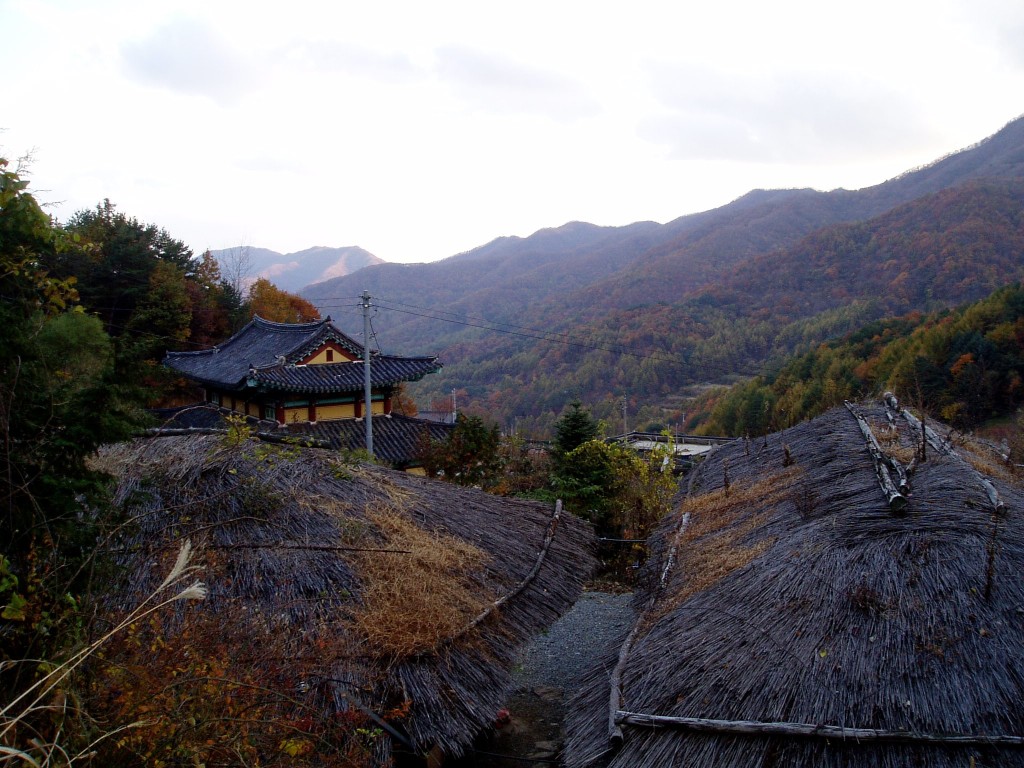
Dawn. The mysterious mountain mist lifts slowly to reveal the day like a gift. The landscape like a present.
Slowly unwrapping was an impressive mountain range beyond which another and another and another still all the way into blue oblivion. All the way into the point of perspective. All the way to a horizon beyond vision. Ancient mountains. Mountains weathered smooth by centuries of weather. Mountains upholstered today in the richest autumn colours.
Where, a moment before, all was covered in the soft silveriness of a grey morning mist, lit by a pale sun, now a very deep and rich autumn colour, washed clean by the night’s dew, sparkled in bright burnished gold, in henna, in rouge, in ruby, in cadmium orange, in saffron, in tangerine, in old gold, in Lutea’s gild, in citron, in crimson, in ochres, plus an occasional flash of magenta, violet and mauve and a few streaks of the left-over verdurous summer tints of emerald, olive, and jade. A cosmic paint box opened and used, as a child would, with gay abandon.
The journey to this point of paradise had started a little differently. A little darker. Less colour. The usually energetic train huffed and puffed, creaked and groaned, even sighed. It was 6.30 am and the carriages of the underground were filled wall to wall with sleepy and subdued Koreans. There was non of the usual good humoured banter and laughter, jokiness and chat. This was serious. This was going to work time. However, I was off on a different kind of job, a journey to find a place seen on a post card, a long time ago. It featured an image of a sacred place. A garden made of stones. At the bus station I obtained a ticket, searched for and found my bus, in one of the thirty or so bays from which they leave to every corner of Korea, and settled in. A bus official collected the tickets and, after a few words from the front of the bus, he bowed deeply and we departed.
Bus Window Pictures. The oxidising and darkening rice fields stooks, which have not as yet been brought in, gleam gold. Elsewhere, with the rice fields all cleaned up, the beautiful and intriguing patterns of the left-over stubble are revealed. In some fields these patterns are intensified by burnings while in others they are beautified by recent rain left over in lines which mirror the sky. Or like lines of stubble set in blue glass. Some of the fields, already ploughed, create a wonderful dark contrast giving the landscape an uneven chequered look. I enjoy reading the harvested landscape like a book. Occasionally the bus drives through long concrete tunnels cut expertly through the many mountains. Or through tunnels of a different kind, of transparent autumnal foliage which set the bus ablaze with cathedral stainless-glass-like light.
I change buses at a small country bus station. The next leg of the journey was all the way up. The road writhing like a serpent, the bus following suit. Each sudden turn revealed another, and even more colourful and intense, aspect of the autumnal landscape. I haven’t enough eyes to see, to take it all in. We climb fast and soon the harvested valley is a hazy memory behind us. Every house or hamlet seems a bus stop. The bus stops on command.
Everywhere the roads are lined with Japanese maple trees which look like paint brushes, dipped in vivid reds, golds, ochres, oranges and yellows, are stuck upside down in the ground. Ahhhh… And, as is probably the case every day, the bus arrives in time and I am delivered, safely, into the lap of the Jiri mountains.
I had a arrived in the tiny village of Cheonghak. The light in this high village is like music. It resonates amongst the steep mountains. It feels ethereal yet at the same time is totally down to earth. Like the quality of the people and their architecture. The people’s lives. They still wear their beautiful wide fitting comfortable traditional clothes. Gorgeous linens, complete with white and earth coloured bandanas not, I gathered, because of some tourist fancy, but because it is the way, and has been so for a long time. They move around in their steep terrain slowly but with purpose, with strength. The men wear their hair long, tied in a topknot or a pony-tail. The women wear their children tied in cloths on their backs and their loads tied in cloths on their heads. Many of the houses still have earth walls and straw roofs which provides both the architecture and the landscape they sit in with a comfortable stable look. It all fits. It all seems to belong together.
After a long day of being in motion, I stand once again in a priceless spot. I reflect with a new understanding on the thought that ‘the journey is itself home’. I felt at home in it.
After the train and bus journeys, I set out to find the magic garden of stones. But first needed a place to sleep. Looking around the small village I open the door of a Korean home-stay. It also turns out to be a restaurant. The moment I walk in everyone stops eating and talking, looks up from their position on the floor and makes me the unmistakable center of attention. “Have you a room”, I ask in best Korean to the space at large, upon which the whole of the clientele gets into a frenzy of movement, gesturing me to sit down, waving and saying “Hi”. One woman gets up from the floor and, without any fanfare takes me outside, up a pair of concrete steps, onto the roof and there through a wooden door shows me a simple room. It is empty but for a pile of bedding in the corner. “Shower” she informs me and shows me a minuscule bathroom. (I find later that the water is the temperature of molten snow). After agreeing to a price for three nights I was taken downstairs to the no-choice-one-meal-only restaurant. Excellent choice. I allow nothing to bother me when I travel like this, not even the cold water. I enjoy all I am offered and, as a result, receive a great deal.
When, during the meal, I explained that I was here to find the magic stone garden there were sounds of approval. It didn’t take too long to be invited to the family table and to be offered fruits and numerous glasses of the devil drink Soju. It knocked me out. In the end, the owner of the café stood up and said something in Korean which a young high school student translated as: “You are very welcome to our house”. Knowing this was extremely special I stood up, bowed in the Korean manner, and thanked her, which got an applause. I said that this was a house of much laughter and joy, hard work and love and therefore the food had to be good. It was. Applause and more Soju. When, not long after, I stumbled up the steps to find my room I fell grinning into an angel-like sleep. I was closer to heaven than I had ever been.
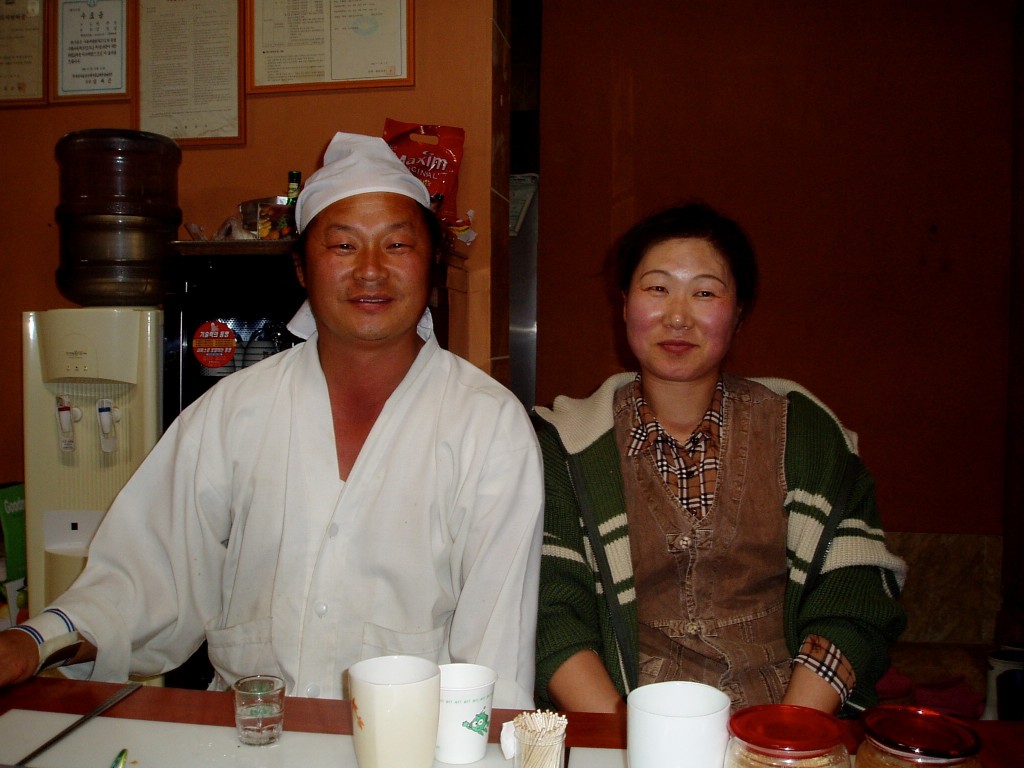
Next morning, after some breakfast, I set off on my quest to find the garden of stones. Both the morning and the landscape were excruciatingly beautiful. A fresh November breeze blew through the valley and although a lot of colour had already been blown of the trees, there was still plenty left to enjoy. I followed the road along a narrow pine needle covered path, enjoying its fragrance, and came, in time, to a small wooden door set in a wall of stone. I hit the gong next to it and, after a while, the door was opened by a man in traditional clothing. He said something to me in Korean and, putting his fingers to his lips, gestured me to follow him. I had to bend low to enter the small door and found myself walking along a dark passage at the end of which I received my first glimpse of the ‘Garden of Stones’.
There were towers, pagodas, walls, shrines and here and there in all this stoned grey-ness a few trees in blazing autumn colour.
My first reaction on seeing the garden was: ‘Gaudi without the colour’. The same organic feel and quality I had experienced with the Spanish architect’s work long ago in Barcelona. The garden, or vast composition in dry stone, was situated on a few terraced acres high up in a steep mountain range. Since shared language was non-existent, all I could do was observe and enjoy the magnificence of the enterprise. Every wall and sculptural form was curved and constructed from very small to very large stones. In addition, many old stone objects, such as grinding stones, ancient wheels, mortar and pestle and bowls were also used in the compositions. The most impressive pieces were very tall conical stone towers. Wide at the base they reached up with a subtle curve that ended in a variety of finishes, all delicately stacked. There were towers, pagodas, walls, shrines and here and there in all this stoned grey-ness a few trees in blazing autumn colour. In addition, the moss on some of the stones and lower part of the structures provided another type of colour magic. I spend hours wandering among these stone creations. Stones stacked, stones carefully placed, stone upon stone. Stones into many creative and even awesome structures. Stoned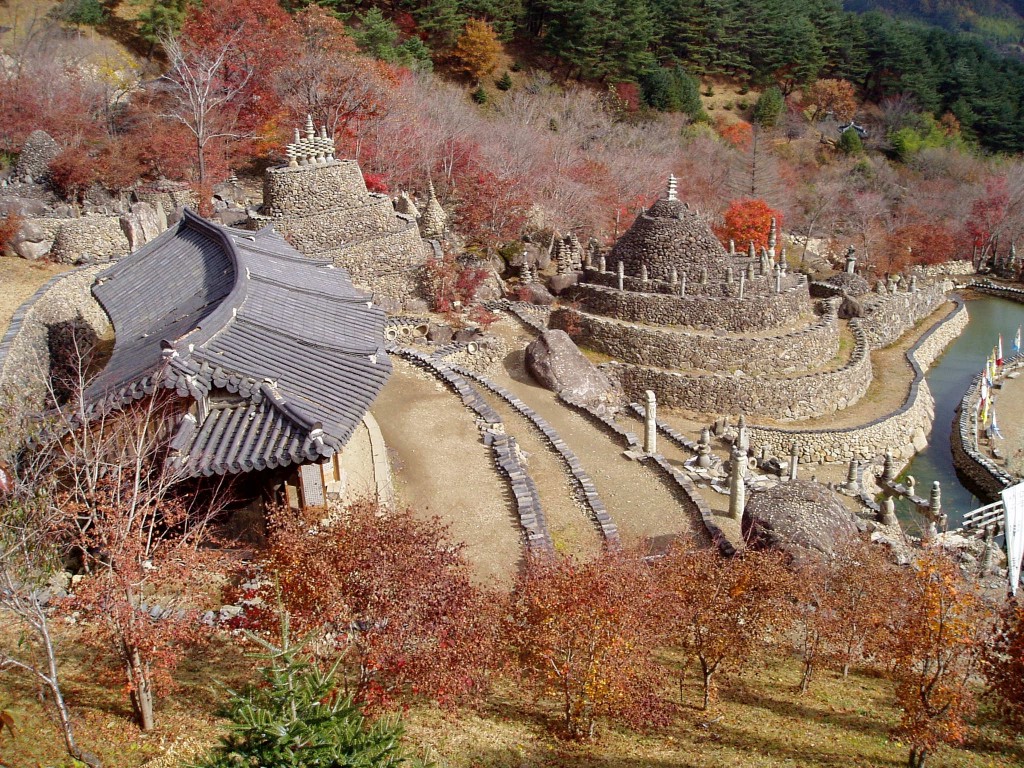
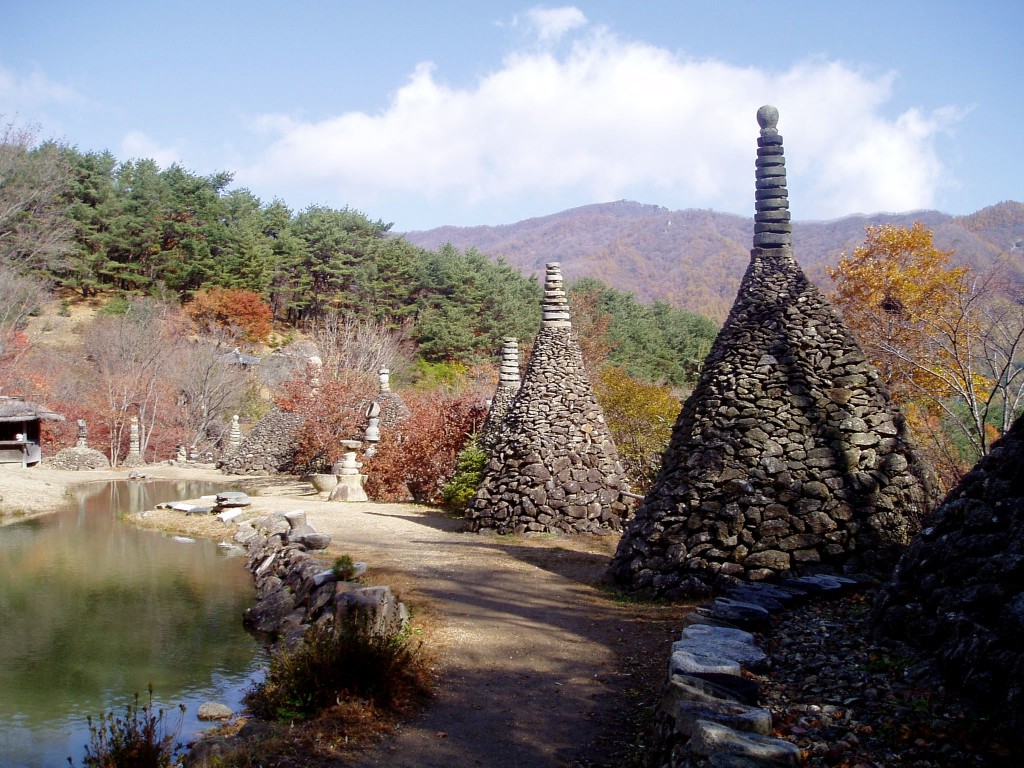
High up on a mountain top I saw the light. The light was ethereal. In a moment as close as I will ever get to perfection, I experienced a feeling of transcendence. I heard the sound of the universe and the sound was expressed in ‘light’. I laid down on top of the world and allowed the light-sound to soak into me, to become part of me or, more precisely, I become part of it. I wanted to sing with joy, but could only bring forth a whimper of awe, a whisper of reverie. In this huge space I uttered the little sound of Aaahhh… What else could I do, standing in heaven all alone. And it was here that I finally understood that my occasional loneliness was the price I paid for solitude. And that the intensity, and wonder of this experience, was a result of this solitude. It was here I understood that this was also the prize I had received for stepping out of my comfort zone. Alleluia………
Climbing in the now.
After climbing yet another summit, I am starting to understand why the Koreans are so strong, so flexible, so agile, so tenacious. They are a mountain people and therefore every movement they make is either up or down. No matter which way they travel, extra effort is needed. Then there are the continuous and rapidly changing views, the breathers you need to take on such journeys, the balance to be maintained and, most of all, the taking care not to fall off the mountain…. All this must alter one’s perception of the world.
The trick for me, when I am climbing any mountain or when I am engaged in any such physical activity, is not to care whether I get to the top or not. To do so would put great stress on the venture at the very beginning of this huge task and thus defeat the purpose of the exercise.
Getting ‘there’ is not important, ‘getting’ there is….
The going got tough and I am into the do-I-really-want-to-do-this-mode. During this part of the climb I kept asking myself whether the pain was worth the effort. And as far I was concerned it wasn’t. Mainly because, I did not know what ‘it’ was. But I found out. ‘It’ was the climb. Including the creative tricks your head plays on you while climbing. ‘It’ was the trick to climb one step at the time and give that moment full attention. ‘It’, no matter the pain in the body, the perspiration running rivers, the lungs feeling like bursting, the legs wobbly, was the new, the adventurous and, as a result, the ‘learning’. The biggest learning was realization that ‘to be truly in the moment’ was the only way to deal with the physical pain. Not to speculate on this or that or on ahead, on behind. Not to think about the time. Not to think that I had to get back before dark, or else. Not to think what would happen if, or if, or if…. All spooks, having a go at a lonely man crawling up a wall. All spooks invented. This is where the terror hides, even in daily life with its often more mundane activities. This is the dragon guarding the gate of creative living. It is interesting, and encouraging, to stand half way up a mountain, not knowing how far it is to the top, and considering the fact that we always seem to worry about the future or the past and that there is actually nothing we can do about either. But that we can deal with the moment, here and now, and can deal with it very effectively. That we are able to fill this moment with positive energy for starters and thus send negative thinking on its way. I must take care with all this heavy-breathing thinking, I am getting lost from the path……
Each step I took suggested that this-has-been-enough-and-can-I-go-back-now. Then I’d seduce myself into just one more step and on, until I came to that point where I know I will not return, I will get to the top.
When I finally arrived at the summit, there, on a small rock plateau, four monks, dressed in their gray robes, were seated in a small circle, eating bright orange mandarins. They left soon after, but not before offering me a bright orange mandarin, which I accepted with grace. Smiles all around.
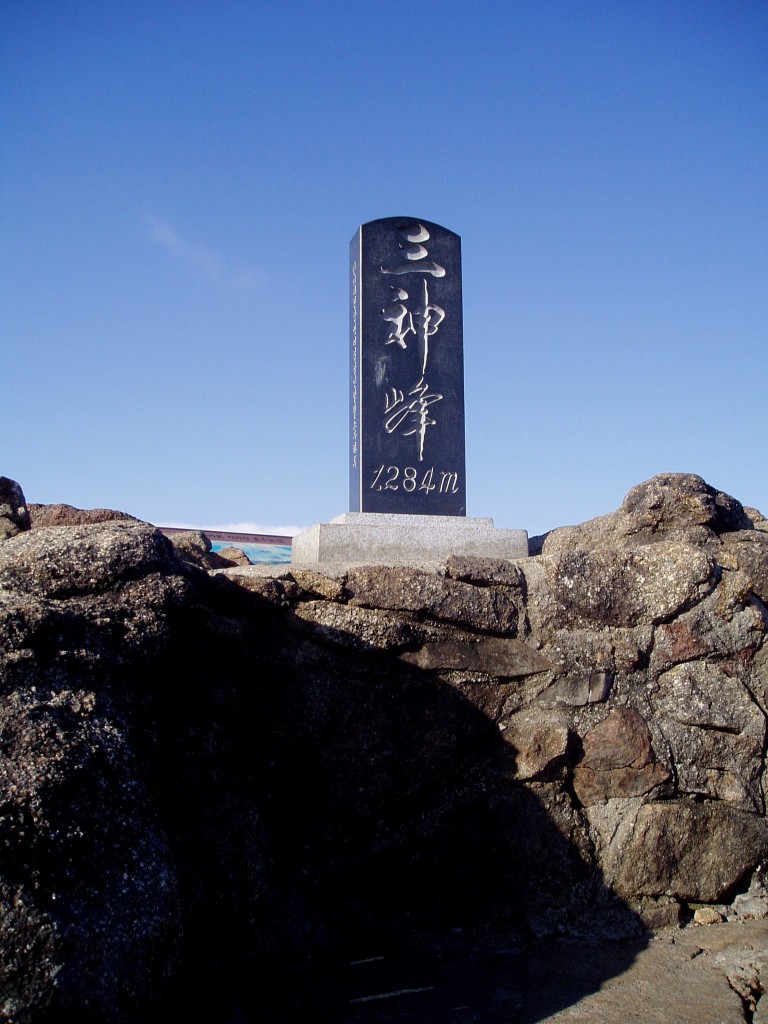
I watched their grey robes fluttering down the path, with runs, jumps, joy and laughter. Monks are boys. They were obviously as high as I was.
At the end of hauling oneself up a steep mountain side there is the ‘Absolute Lightness of Being’. A feeling for which I lack the words to describe. The body has no demands at this time, and is in a state of high exhilaration. A state of physically feeling nothing much. Nothingness. Even the tiredness has disappeared. High on the power gained from the climb. High on the absolute now-ness of the moment. High on the fact that for once it does not take any effort to Be-Here-Now, plus understanding how good that feels. Imagine, in this state, to view the world. God’s eye view. And the world looked small down there. And the world looked huge down there. A world veiled in the beautiful blue of distance. And in that distance the edge of eternity.
Post script
Contemplating the past Korean journeys and what it means for me now.
Arriving from the metropolis of Seoul to our village was not unlike turning down the noise to the delights of silence. And in this silence ever so slowly, meaning, which got lost in the noise, returned.
It is good to leave home and equally good to return. Good to see the familiar as new and the world left behind, upon return, as if for the first time. Good to become aware of the magic of the home environment.

Arriving from a place of 13.000.000 people with a few trees to a place with 13.000.000 trees and few people, there are many contrasts. The first to strike me was the quality of the air. I couldn’t get enough of it, standing on the veranda, deep breathing clean fragrant air. It was not only the amazing sweetness of the spring wattle, but the particular freshness of our air. Then there was the spiritual enjoyment of the quiet of night time, plus the restfulness of the natural dark. I feel for the people in Seoul who know no natural silence nor dark, nor do they know the delight of sweet clean air.
To once again stand under the night sky bejeweled with millions of stars softly humming heavenly melodies was both, in the true sense of the words, awesome and overwhelming. Standing there in the garden and looking up, after six months in a space heavy with air pollution, is a privilege indeed. As is the wild life which flies and hops freely about.
There is also the restful green, the abundance of that green, plus every nuance of that green under the sun. After a lack of it one starts to understand the power of this colour all around us, how it influences our inner peace-life. Forgive me at this moment of home arrival when I think I live closer to heaven than I ever have. Or so it seems. And how will I never again take this for granted? By traveling and returning? Or maybe by reading about it.
Now safely home, I satisfy my desire to move with a daily walk in the forest, having learned, and believing strongly, that one kind of motion encourages another. Every question can be walked into an answer, every problem can be walked into a solution, the creative spirit can be walked into being.
I am blessed to have travelled well, I am blessed to have returned to one of my homes, without any regrets. (Remembering that, anyway, regrets are a waste of time). How true. Life with or without regrets will be over soon enough, better not regret any of it. However, there is just the matter of the heart. The heart which wants to fly and be free versus the heart which wants to be home, wants to be needed, wants to be held.
I am grateful for all I have received.
What remains? You will probably ask: Is there anything about how you’ve chosen to live now which embodies some of the values you encountered in your journey through Korea?
The answer:
Having spend two residencies (about one year in Korea) has certainly left its mark. For almost a year after my return, I could not make clay works, finding it difficult to make anything which had already been done so much better, so much more natural, so much more exquisite in Korea. I felt useless in the field of ceramics. But then after about a year the lure of making took over once again and I realised that the point of the making was just that, ‘the making’ and going through the experience of that and the experience enriching you.
More than anything which I took from Korea is a new appreciation of the treasures around my own home, which as a result I have come to appreciate more than ever, that plus the journeying on, on the ceramic path.
Author
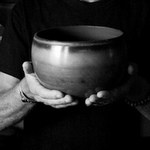 I am and have always been a free and creative spirit
I am and have always been a free and creative spirit
i have chosen to live in the forest near Daylesford in Victoria
because it sustains, inspires and motivates me
it also provides answers to all of my queries
thus gives me sustenance.
it inspires me in my various creative endeavours
such as my new project ‘a series of works inspired by
the magic and the beauty of the forest’


Comments
Petrus Spronk is a world-class potter. If he lived in Japan, I have no doubt that he would be designated as a living national treasure. As a writer, he offers a unique voice that does indeed reflect his free, idiosyncratic spirit. Thank you for including this article in Garland’s premiere issue.